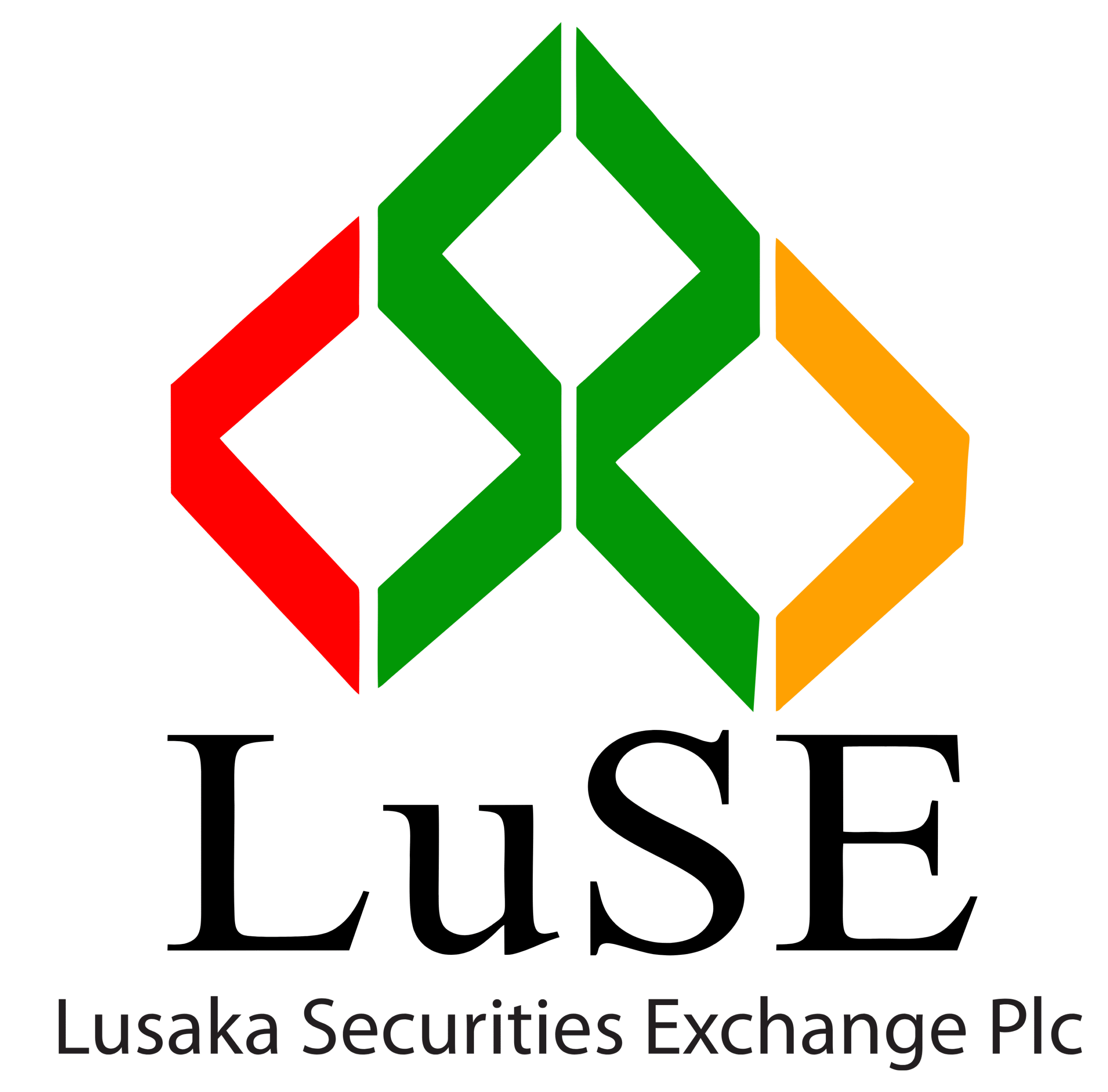Equity Securities
You can raise funds by issuing shares of ownership to the investors in return for cash. And on the LuSE platform you can choose to raise funds via the Main Board or via the Alternative Market (Alt-M). See below the differences between these two platforms
Main Board
Businesses and Organisations seeking to issue shares on the main board must have among other requirements a subscribed capital and shall have a satisfactory audited profit history for the preceding three financial years.
Companies that meet the following criteria qualify to list on the LuSE Main Board.
- 3 years profit history
- Minimum 25% of shares issued to the public
- Minimum of 300 shareholders
- Minimum annual turnover of ZMW 20,000,000
- Minimum subscribed capital of ZMW 5,000,000
- Minimum of 10 million shares in issue
Alternative Market
Companies that meet the following criteria qualify to list on the LuSE Alt-M.
- Trading Turnover – minimum of K250,000 and a maximum of K20 million
- Employees – minimum of up to 20 and maximum of 150
- Shares in Issue - Not less than 500,000 equity shares should be in issue
- Share Spread – Minimum of 10% of the issued shares to be held in public hands.
- Minimum of 30 shareholders
- Either 5 years in operation, and /or show increased revenues for past 3yrs and /or one-year audited financials or a Business Plan
Read More
Once you have decided to expand your business, the first step is to understand the process that will help you access the funds required for growth. The following considerations are key to get you started:
I. Obtain the list of the LuSE approved Designated Advisers
A Designated Adviser (DA) is an appointed Financial and Investment Advisor that has been approved and authorised by the LuSE and licensed by the Securities and Exchange Commission to guide your SME to abide by the rules and regulations as set out in the LuSE listing requirements. You can find contact details for a DA here
The DA will assess the feasibility of the business and conduct due-diligence as to the viability of the business as well as ensure that the growth of the company complies with the Alternative Market listing requirements. This will give investors the confidence to invest given that the company is being run in accordance with their expectations.
II. Appoint a LuSE approved DA
III. Convert your company at PACRA from a limited company to a public limited Company (Plc)
IV. Register your company shares with the Securities and Exchange Commission (SEC)
V. Fulfil listing requirements and complete a listing application. The DA will assist you in completing and submitting your listing application.
VI. Once the listing application is submitted, the LuSE will review and provide you with formal response regarding the approval of your application.
VII. The LuSE will also be on hand to answer any of the questions you may have regarding your listing on ALT-M
Exchange Traded Fund (ETF)
An ETF is defined as a listed investment product, which tracks the performance of a particular index or “basket” of shares, bonds, money market instruments or a single commodity. These are known as underlying securities or assets. ETF are traded on an exchange just like an ordinary share and the price of a particular ETF will be determined by the demand and supply of the ETF. An ETF can be a domestic or offshore product. Examples of ETF include:
Index EFT – Most ETFs are index funds that attempt to mimic the performance of a specific index. Indexes may be based on stocks, bonds, commodities, or currencies. An index fund seeks to track the performance of an index by holding in its portfolio either the contents of the index or a representative sample of the securities in the index.
Commodity ETFs (ETCs) – Invest in commodities such as precious metal, agricultural products and hydrocarbons.
Stock ETFs – This was the first and most popular ETFs. This type of ETF owns funds from other stocks.
Bond ETFs – They invest in bonds. They thrive during economic recessions because investors pull their money out of the stock market and into bonds (for example, government treasury bonds or those issued by companies regarded as financially stable).
Real Estate Investment Trusts (REITs)
A REIT is a regulated collective investment vehicle that invests primarily in income generating real estates and enables persons to contribute money’s worth as consideration for the acquisition of rights or interests in a trust that is divided into units with the intention of earning profits or income from real estate as beneficiaries of the trust. Modelled after mutual funds, REITs pool the capital of numerous investors. This makes it possible for individual investors to earn dividends from real estate investments—without having to buy, manage, or finance any properties themselves.
Collective Investment Schemes
A Collective Investment Scheme (CIS) or a Mutual Fund is an investment option where funds from investors are pooled together to buy a variety of stocks, bonds, or other securities. This mix of investments is managed by a professional fund manager, providing individuals with a portfolio that is structured to match the investment objectives stated in the fund’s prospectus.

